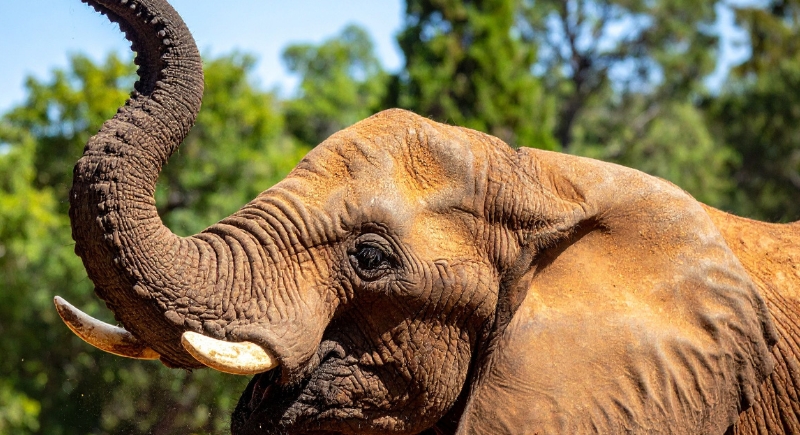What Can an Elephant Actually Do With Its Trunk? The Answer Is Amazing
Elephants are fascinating animals, and their trunks are even more impressive once you realize everything they can do. This long, flexible combination of nose and upper lip has over 40,000 muscles packed inside. An elephant can use it to rip a tree out of the ground or to gently pluck a single piece of grass without breaking it. They can even lift up to 600 pounds with it. It’s also absolutely essential for their survival.
Elephants rely on their trunks to drink by sucking in several gallons of water and then spraying it into their mouths. When it’s time to cool off, they spray themselves down like they’re running their own shower. They’ll also throw dust or mud on their backs, which acts as a form of sunscreen and insect protection.
These animals have one of the strongest senses of smell in the animal kingdom. This ability helps them track food sources, locate water during dry seasons, and follow the movements of other elephants. Researchers have even found that elephants can distinguish between human groups by smell alone.
Social Tool for Every Occasion

Image via Canva/TrueCreatives
The trunk is a major part of how elephants communicate in the form of body language. Elephants often place their trunks inside or near each other’s mouths as a friendly greeting, a sign of reassurance, a display of dominance, or even a way of showing comfort during stressful times. Calves sometimes reach into older elephants’ mouths to sample what they’re eating, which helps them learn which plants are safe.
Trunks also play a role in moments of conflict and cooperation. One elephant might place its trunk in another’s mouth to smooth things over, while a third may do the same to mediate a standoff. During play, elephants use their trunks to touch tusks and mouths. They even guide one another by using trunks to nudge calves away from danger or steer herd members in a particular direction.
More Than Just a Nose
Calling the trunk just a nose doesn’t come close to describing what it really is. It’s a tool, a hand, a straw, a weapon, and a way of saying hello. Scientists believe that without trunks, elephants would struggle to survive in the wild because so much of their feeding, drinking, and communication depends on this single body part.